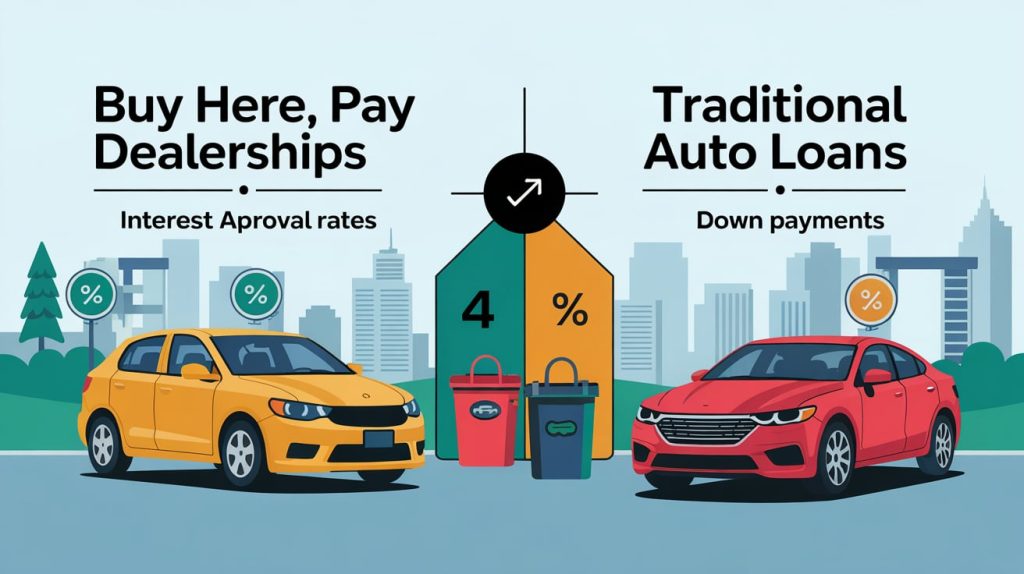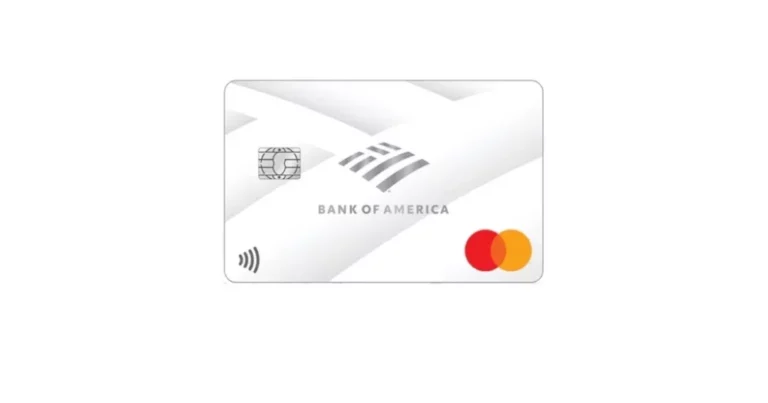Finance Your Car Even with a Low Score in the USA
Anúncios
Purchasing a car is a significant financial milestone for many Americans. However, for individuals with low credit scores, financing a vehicle can seem like an insurmountable challenge. A low credit score often discourages traditional lenders from approving auto loans or results in high-interest rates, making car ownership more expensive and financially strenuous. Yet, the good news is that securing car financing with a low credit score is not impossible. By understanding the nuances of credit, exploring diverse financing options, and adopting strategic approaches, prospective buyers can still drive off in the car they need.
Understanding Credit Scores and Their Impact on Auto Loans
Credit scores, particularly the FICO score, range from 300 to 850 and represent a person’s creditworthiness based on their financial history. In the auto loan industry, lenders typically categorize scores as follows: Excellent: 750 and above Good: 700-749 Fair: 650-699 Poor: 550-649 Bad: Below 550
Anúncios
Having a low score (usually below 600) flags lenders that you are a higher risk. The Consumer Financial Protection Bureau (CFPB) reports that under 40% of Americans have a “good” credit score (700 or above), meaning a large portion of the population is susceptible to difficulties when financing a car.
The impact of a low score on auto loans is measurable. Experian’s State of the Automotive Finance Market Q4 2023 report shows that the average interest rate for borrowers with a credit score below 600 was nearly 16%, compared to approximately 5% for those with excellent credit. This discrepancy results in monthly payments that can be hundreds of dollars higher, putting a financial strain on borrowers.
Anúncios

Moreover, some lenders might decline applications outright, forcing those with poor credit to seek specialized lenders or alternative financing methods. The good news is that various viable strategies can improve your chances of getting financed.
Explore Special Financing and Buy Here Pay Here Dealerships
When traditional banks or credit unions decline an auto loan application due to low credit scores, “Buy Here Pay Here” (BHPH) dealerships become popular alternatives. These dealerships finance the vehicle directly to the buyer without involving third-party lenders.
A major advantage of BHPH dealerships is their focus on cash flow rather than credit history, making them accessible for people with poor credit. However, they typically come with higher interest rates ranging from 15% to 30% due to the increased risk they assume. According to a study by the Auto Credit Express, BHPH dealerships accounted for approximately 20% of all used-car sales to consumers with bad credit in 2023.
It’s important to approach BHPH dealerships cautiously. For instance, Chris, a buyer from Texas, was able to get a $7,000 used car loan from a BHPH dealer despite a 520 credit score. While his monthly payments were higher than traditional loans, timely payments improved his credit file within six months, allowing him to refinance at a better rate later.
Comparative Table: BHPH vs. Traditional Loans for Low Credit Scores
| Lending Type | Eligibility for Low Credit | Interest Rate (Average) | Down Payment (%) | Pros | Cons |
|---|---|---|---|---|---|
| Buy Here Pay Here | Yes | 15% – 30% | 10% – 20% | Easier approval, quick process | High interest, limited inventory |
| Traditional Lenders | Low to moderate | 8% – 16% | 5% – 20% | Lower interest, better cars | Often declines low credit applicants |
While BHPH dealerships provide an avenue to car ownership, buyers need to weigh the costs carefully and plan for potential refinancing opportunities.
Utilize Credit Unions and Community Banks
Though traditional banks usually require higher credit scores, credit unions and community banks often have more flexible lending standards, making them a valuable resource for low-score borrowers. Credit unions, known for their member-centric approach, sometimes approve loans based more on customer relationships, employment stability, and debt-to-income ratios rather than just credit scores.
For example, the National Credit Union Administration (NCUA) reported that in 2023, approximately 35% of credit union auto loan approvals were for members with scores below 620, compared to less than 10% at major banks. Some credit unions also offer “second chance” loans specifically designed to help individuals improve their credit while making affordable payments.
Take the case of Rosa, a recent graduate in Florida, who had a credit score of 590. She applied to her local credit union and was approved for a $12,000 auto loan at 9% interest, with payments structured over 48 months. The credit union also provided financial counseling, which helped her improve her credit score by 70 points within a year.
Why Choose Credit Unions? Lower interest rates than subprime dealers Personalized service and credit counseling Loan products tailored for credit rebuilding
Applying for a car loan with a credit union requires membership, which is often based on geographical area, employer, or association. However, joining multiple credit unions increases financing opportunities.
Consider Co-Signers and Larger Down Payments
Another effective strategy to secure auto financing with a low credit score is to utilize a co-signer or make a substantial down payment. Both reduce lender risk and improve loan terms.
The Power of a Co-Signer A co-signer is typically a family member or friend with good credit who agrees to pay the debt if the primary borrower defaults. According to a 2022 report by LendingTree, co-signers typically reduce the interest rate by 3-5 percentage points for subprime borrowers.

Consider James, who had a credit score of 540 and wanted to buy a reliable sedan. His father co-signed his loan, which helped James secure a $15,000 loan with a 10.5% interest rate, down from the expected 18%. The co-signer’s involvement was key in the lender’s decision.
However, potential co-signers should be aware of the responsibility, as their credit becomes liable for the loan—missed payments can affect both parties’ credit.
Larger Down Payments Lenders perceive borrowers who put down more money upfront as less risky. Down payments of 20% or more can significantly improve approval chances and reduce interest rates. Experian’s 2023 data indicates that borrowers with sub-600 credit scores who provided a down payment of at least 25% saw average rates drop by approximately 4 percentage points.
For borrowers struggling to save such an amount upfront, this can be challenging, but combining smaller down payments with a co-signer or alternative loan sources can enhance approval odds.
Explore Alternative Financing Options and Loan Programs
Beyond traditional and subprime lenders, borrowers with poor credit can explore a variety of innovative financing options tailored to their needs.
Online Auto Lenders and Marketplaces Innovative internet-based lenders like Capital One Auto Navigator and RoadLoans streamline the application and approval process. These platforms integrate credit decision tools that give borrowers an upfront idea of loan rates and approval odds without impacting credit scores. This transparency is valuable for borrowers trying to gauge realistic options.
For instance, Capital One reported in early 2024 that their platform approved 35% more borrowers with scores below 600 compared to their traditional loan process, offering competitive rates based on down payment size and vehicle age.
Peer-to-Peer Lending and Personal Loans Borrowers with low credit scores might also consider peer-to-peer lending platforms like LendingClub or Prosper, which provide personal loans suitable for car purchases. Although personal loans for cars often have shorter terms and higher interest (12%-30%), they offer flexibility and fewer restrictions on vehicle type or condition.
Borrower Michelle from Ohio used a $10,000 personal loan from a peer-to-peer lender to buy a used car after repeated denials from banks. Her fixed monthly payments over 36 months enabled her to gradually build credit while meeting her transportation needs.
Manufacturer and Dealer Incentives Certain automakers and dealers offer special financing deals—such as rebates, lower APRs, or longer term loans—particularly for first-time buyers or customers financing through the manufacturer’s captive finance arms.
For example, Hyundai’s Car Buyer Loyalty program sometimes extends financing to buyers with credit scores as low as 580, with rates as low as 5.9%. These incentives can offset higher lender rates and offer a manageable path toward vehicle ownership.
Maintain Realistic Expectations and Improve Credit During Ownership
While financing a car with a low credit score is achievable, it is critical to maintain realistic expectations about the interest rates, loan terms, and vehicle price range. Borrowers with poor credit might not get approvals for the newest models or longest loan terms—instead, they should prioritize affordable monthly payments and vehicles that retain value.

Moreover, financing a car can serve as a tool to rebuild credit. Making on-time payments consistently can improve your credit score over time. According to Experian, timely auto loan repayments can increase a credit score by up to 40 points within a year.
Many lenders report payment history to all three major credit bureaus, making car loans an excellent opportunity for those seeking credit rehabilitation. Users should also consider refinancing once their credit improves, potentially lowering interest rates and monthly payments.
Future Perspectives: Trends and Innovations in Auto Financing for Low Scores
The landscape of auto financing continues to evolve, offering hope for borrowers with low credit scores well into the future. Several trends highlight how technology, regulation, and market forces combine to improve access.
Increased Use of Alternative Data Lenders are progressively leveraging alternative data beyond traditional credit scoring. This includes rental payments, utility bills, employment history, and even social media profiles to assess creditworthiness. Firms like Upstart and Zest AI lead in applying artificial intelligence (AI) to approve borrowers previously rejected by traditional models. This trend could allow more Americans with low credit scores to secure auto loans with better rates.
More Flexible Financing Models Subscription-based car ownership and leasing programs might become more accessible to subprime borrowers. Companies like Fair and Canvas offer short-term auto leases requiring less stringent credit checks, providing alternatives to traditional loans, especially in urban markets.
Regulatory Support Government agencies and nonprofit lenders are also actively promoting programs that reduce predatory subprime lending. For example, the Department of Transportation has advocated for clearer disclosure of loan terms to protect vulnerable borrowers and encourage financial literacy.
Market Data According to a 2024 report by the National Automobile Dealers Association (NADA), the share of auto loan approvals for borrowers with scores under 600 increased by 5% from 2020 to 2023, reflecting growing lender confidence in diversified borrower risk profiles.
Financing a car in the USA with a low credit score is challenging but far from impossible. By exploring special financing channels like Buy Here Pay Here dealerships, credit unions, and online auto lenders, employing strategies such as co-signers and down payments, and leveraging emerging financial tools, individuals with poor credit can still attain car ownership. Moreover, the evolving auto finance market and regulatory environment promise continually improving options for these borrowers in the years ahead. With informed decision-making and disciplined financial habits, even those with low scores can pave a road to financial and vehicular independence.

Post Comment